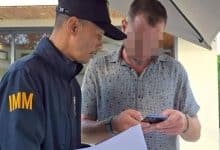Inspirational sledge dog Balto, captured in a statue at New York’s Central Park

New York’s Central Park pays homage to a sledge dog named Balto through a dedicated statue. The dog’s amazing story even made its way to the big screen. Ninety years after his death, this legendary canine is the subject of a DNA study looking into what made him so famously resilient.
In 1925, Balto, a Siberian husky, was part of an Alaska expedition known as the serum run. The mission involved transporting life-saving medicine to children in the remote town of Nome, under threat from diphtheria. Amidst treacherous blizzard conditions, multiple sledge dog teams relayed the anti-toxin from Anchorage, with Balto leading the group that covered the final difficult stretch of their arduous journey.
Balto passed away in 1933, and his preserved body has been on display at the Cleveland Museum of Natural History ever since.
Katherine Moon, a postdoctoral researcher at the University of California, Santa Cruz, and the study’s main author, said…
“Balto’s fame and the fact that he was taxidermied gave us this cool opportunity 100 years later to see what that population of sledge dogs would have looked like genetically and to compare him to modern dogs.”
Recently published in the journal Science, Moon’s team obtained skin samples from Balto’s belly and reconstructed his genome – the complete set of genes in an organism. Comparing this genetic material to that of 680 contemporary dogs from 135 breeds, the analysis debunked a previously held belief, as popularised by an animated film from Universal Pictures in 1995, that Balto was half wolf. Instead, the study found no traces of wolf ancestry in Balto, revealing that he shared ancestors with modern-day Siberian Huskies and Alaskan and Greenland sledge dogs, Bangkok Post reported.
By comparing Balto’s genes to the genomes of 240 other mammal species through an international initiative called the Zoonomia Project, researchers were able to determine which DNA segments remained constant across all species and have thus remained unchanged over millions of years of evolution. This stability suggests that these sections of DNA are linked to vital functions in animals and that mutations could be harmful.
The study concluded that Balto had fewer potentially dangerous mutations than today’s dog breeds, indicating that he was a healthier dog.
Moon added…
“Balto had variants in genes related to things like weight, coordination, joint formation and skin thickness, which you would expect for a dog bred to run in that environment.”
This research offers a fascinating insight into Balto’s genetic makeup, shedding light on his impressive endurance and the inherent qualities that contributed to his legendary status.
Latest Thailand News
Follow The Thaiger on Google News:


























